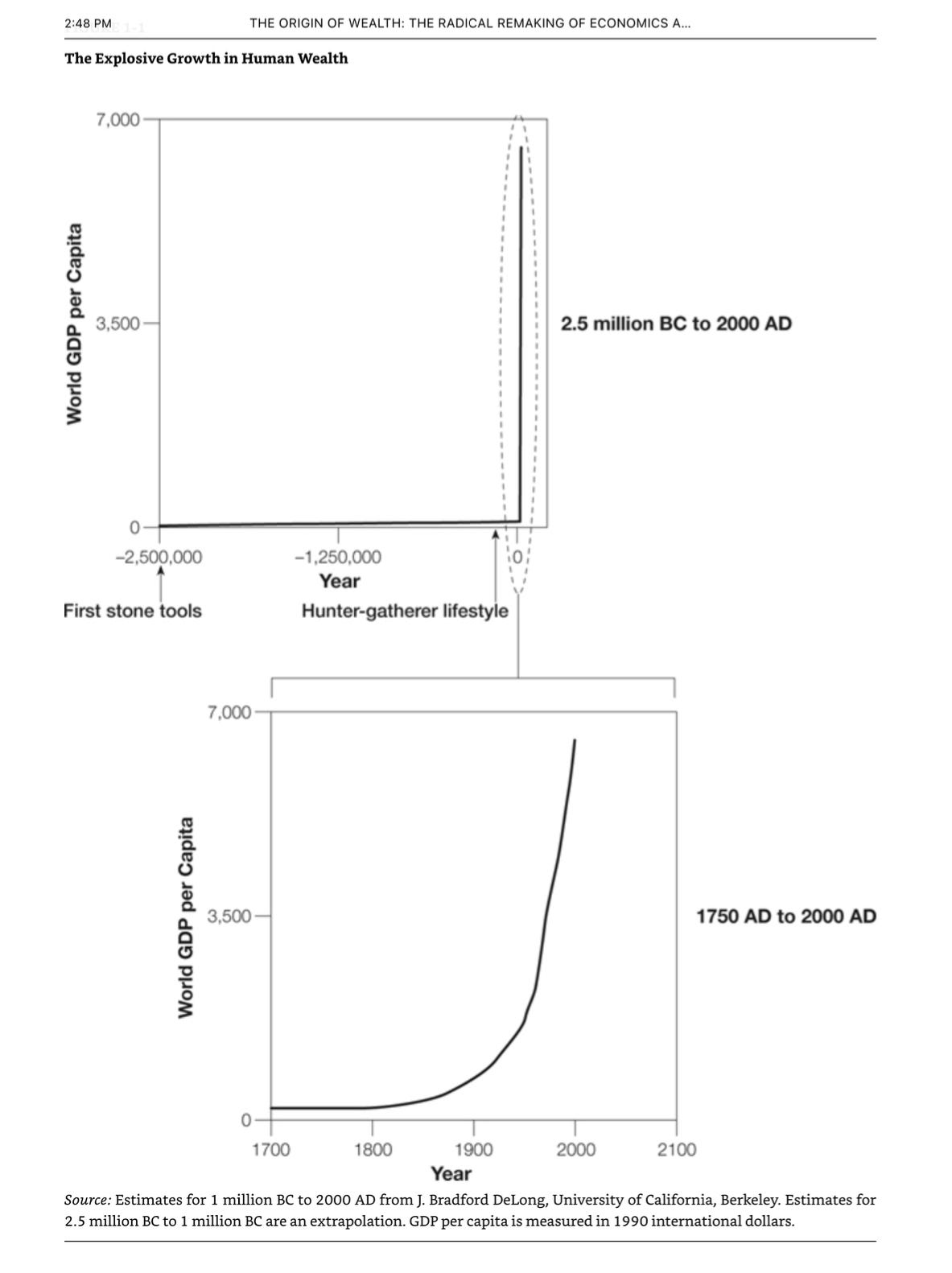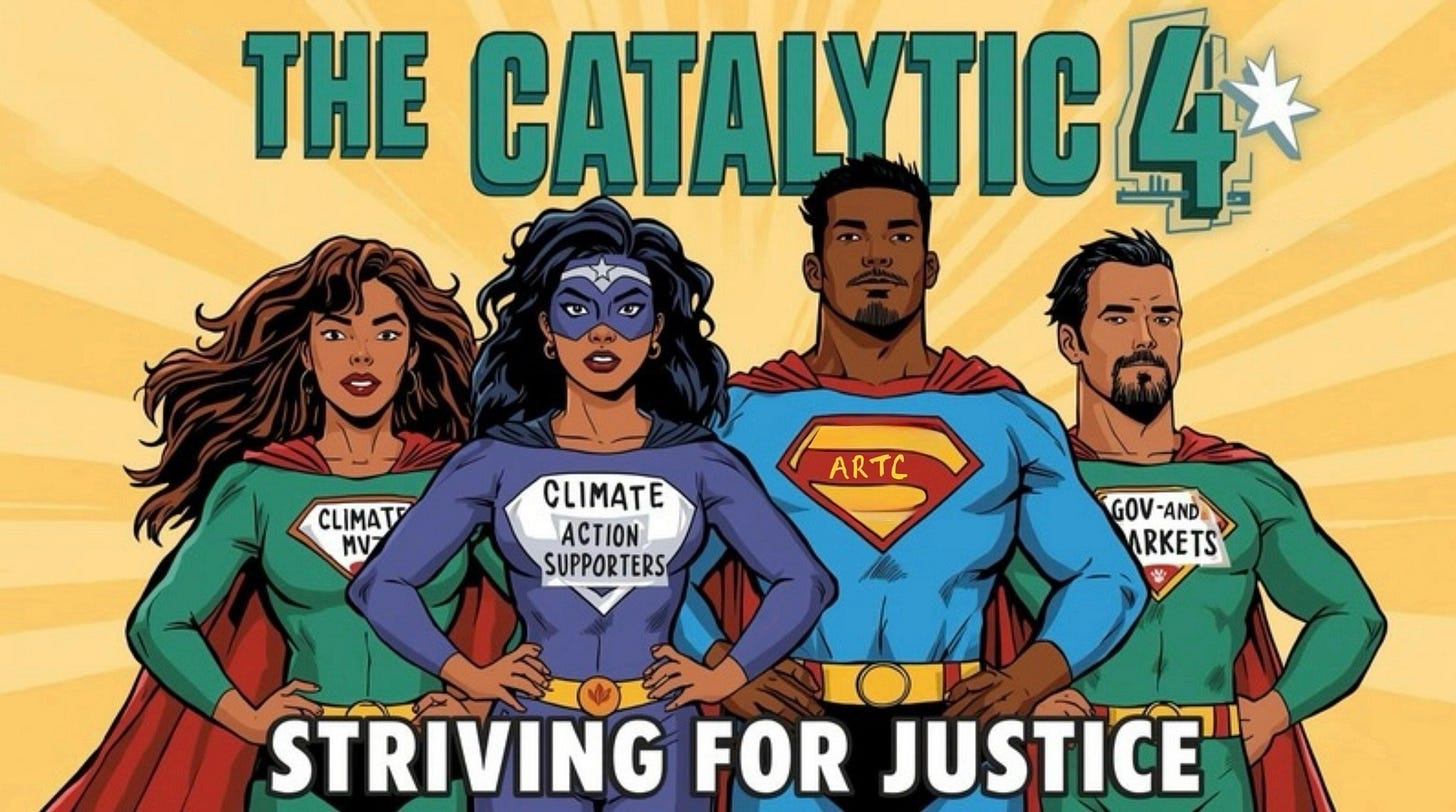Climate Action & Nobel in Economics Winners
First Take — News in Climate Action Context — Strategic ARTC
I was very pleased to see this year’s winners of the Nobel Prize in Economics were scholars who have helped us understand how the production of useful knowledge leads to technological invention and innovation, resulting in sustained economic growth.
I’ve read a great deal by one of the recipients, Joel Mokyr, including his books The Lever of Riches and The Culture of Growth. Less so the other two, Philippe Aghion and Peter Hewitt. All three were selected “for having explained innovation-driven economic growth.”1
Mokyr is an economic historian — a very small and withering branch of academic economics that appears to me to be off to the side from the rest of the discipline, and dare I say ignored. He joins a small group of economic historians who have won the prize, a woefully inadequate situation for which honoring Moykr is a step in the right direction.
From the Nobel Committee’s perspective, Mokyr’s main contribution has been to show how science is the key to continued tech change and its subsequent contribution to economic growth as societies escape the Malthusian trap.
Mokyr demonstrates many cases of tech change throughout history that were accomplished without having a complete understanding of why they work. So tech without scientific understanding can result in new inventions and innovations.
But without the scientific understanding, at some point tech change hits a wall, runs out of gas, and thus so does economic growth. Understanding how and why something works allows for a fuller understanding of capabilities and potential, and fresh thinking and experimenting. That’s why science is the key to the explosion of economic growth related to the Industrial Revolution and all subsequent such “Revolutions,” as visualized in the graph below.

Moykr’s work, along with others like Paul Romer, Christopher Freeman, and Robert Solow, has helped me in my articulation of the Third Catalytic Source of Transformation for climate action, ARTC, or the accelerating rate of technological change.
As I will write about more fully in upcoming posts:
Tech change is responsible for 85-90% of economic growth.
This growth has shot straight up with the Industrial Revolution or what Moykr calls the “Industrial Enlightement.” (For a visual representation see graph by Eric Beinhocker, above.)
The reason for this is the continual production of useful knowledge generated by what I call the “ARTC-combo”: (1) specialization; (2) nonrivalry of knowledge, and; (3) market competition.
Knowledge is nonrival, an admittedly clunky term Paul Romer borrowed from public finance that refers to things that can be enjoyed or utilized by more than one person at a time, as opposed to things that are rival, such as an ice cream cone or a seat at a movie premiere. It is easy to capture a financial return on rival things.
In contrast, nonrival things, like ideas, have an endlessly-copyable-and-useable nature.
But how can you financially benefit, a key incentive for the continued and increasing production of useful knowledge? How can you capture or appropriate returns from something you create if others can easily copy and use it? Once anyone understands a new idea they can find a way to employ it.
And yet it is precisely the nonrival nature of knowledge and ideas, when combined with market competition and specialization, that keeps things moving forward, keeps the ideas bursting forth, keeps tech change churning. Specialization, as an outgrowth of market size, is an incubator of new ideas and useful knowledge. Others grasp your idea and say, “I can make it better.” You, in turn, spurned on by their advance, improve your original idea. The more creative and specialized brains that become engaged, the more opportunities for new ideas. Ideas begetting ideas.
For Climate Action Artist-Athletes and Climate Action Supporters, it is important for us to understand the ARTC-combo dynamic and its potential for helping us. It can be a rich source of hope.
ARTC will not automatically help us. We must make ARTC strategic.
However, and this is crucial, ARTC will not automatically achieve our vision, purpose, and Major Goal. We must make ARTC strategic by having the Catalytic-4 working together to do so.
What Climate Movement Artist-Athletes and Climate Action Supporters need to understand is that we must promote strategic ARTC, i.e., ARTC that helps our societies create change at speed and scale to overcome climate change by creating a just and prosperous sustainability that enhances the wellbeing of everyone and everything — our vision, purpose, and Major Goal. We must push governments-and-markets to make ARTC work for us, make hope happen by making our future come faster. Join us!
If you are new here, check out our Intro Series. If you like this post, please “like,” comment, and share. And thanks for all you’re doing.



